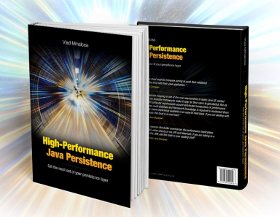Overriding FetchType.EAGER with fetchgraph
Introduction In this article, we are going to see how you can override the FetchType.EAGER strategy using the fetchgraph query hint. While this feature has been available in the JPA specification since version 2.1, Hibernate has only supported this feature since version 5.5.
The best way to use the JPA OneToOne optional attribute
Introduction In this article, we are going to see what is the best way we can use OneToOne optional attribute so that we can avoid N+1 query issues.
Hibernate StatelessSession JDBC Batching
Introduction In this article, we are going to see how we can use the Hibernate StatelessSession in order to enable JDBC Batching for INSERT, UPDATE, and DELETE statements. While the StatelessSession has been available for more than 20 years, until Hibernate 6, its usefulness was rather limited since it lacked support for batching, as well as other cool features, such as UPSERT.
Fetching recursive associations with JPA and Hibernate
Introduction In this article, we are going to see how to fetch recursive associations when using JPA and Hibernate. Recursive table relationships are built using self-referencing Foreign Key columns so that a record in a table can reference another record in the very same table, therefore allowing us to represent hierarchical structures using the relational model.
Hibernate StatelessSession Upsert
Introduction In this article, we are going to see how the Hibernate StatelessSession Upsert method works. As I explained in this article, the UPSERT operation allows you to INSERT a record if there is no such record matching the filtering criteria or to UPDATE it in case the record exists. While many relational database systems offer the standard MERGE command to execute the UPSERT command, the syntax may differ slightly from one database to the other. Therefore, it’s great that Hibernate provides a portable way to achieve this goal.




